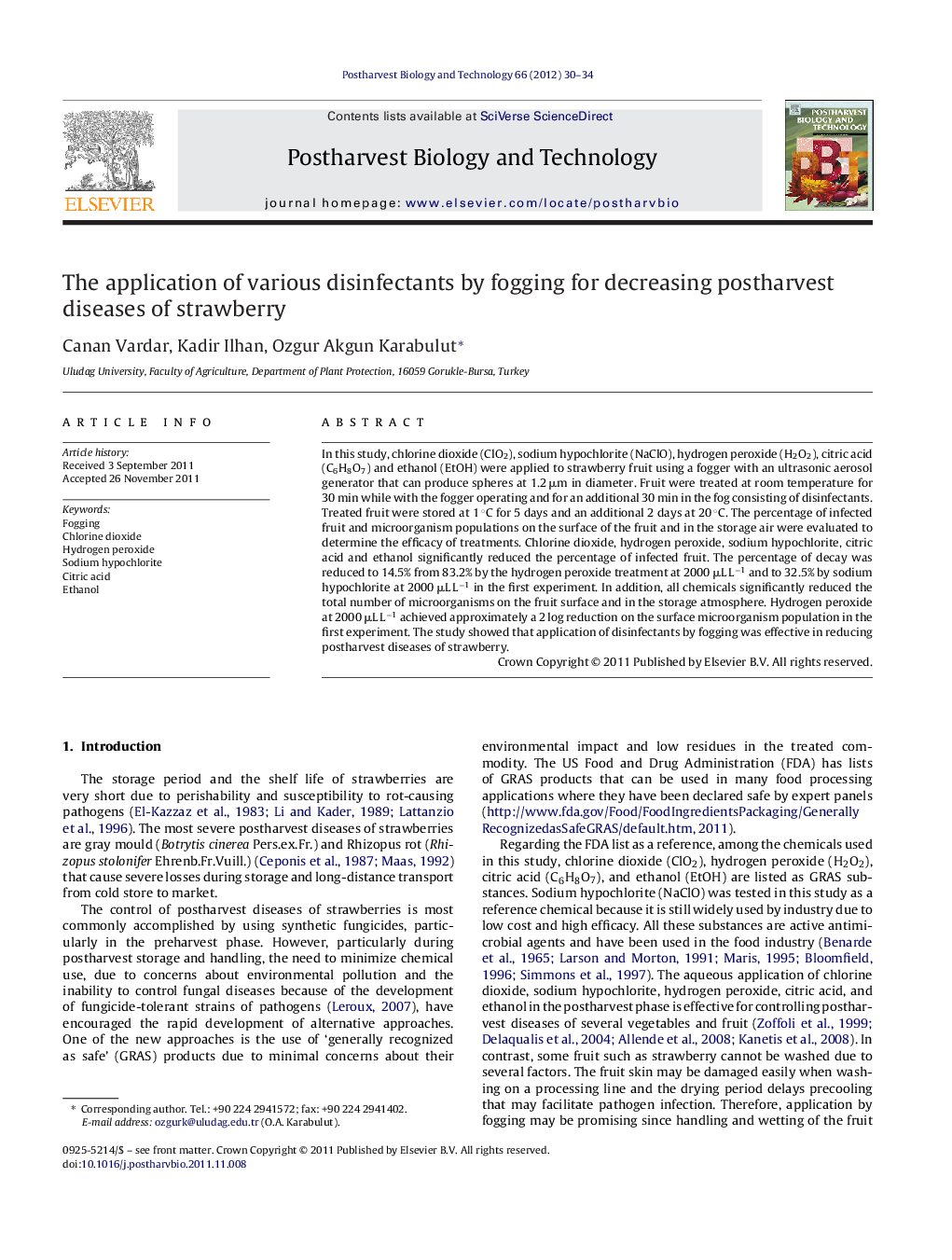| Article ID | Journal | Published Year | Pages | File Type |
|---|---|---|---|---|
| 4518848 | Postharvest Biology and Technology | 2012 | 5 Pages |
In this study, chlorine dioxide (ClO2), sodium hypochlorite (NaClO), hydrogen peroxide (H2O2), citric acid (C6H8O7) and ethanol (EtOH) were applied to strawberry fruit using a fogger with an ultrasonic aerosol generator that can produce spheres at 1.2 μm in diameter. Fruit were treated at room temperature for 30 min while with the fogger operating and for an additional 30 min in the fog consisting of disinfectants. Treated fruit were stored at 1 °C for 5 days and an additional 2 days at 20 °C. The percentage of infected fruit and microorganism populations on the surface of the fruit and in the storage air were evaluated to determine the efficacy of treatments. Chlorine dioxide, hydrogen peroxide, sodium hypochlorite, citric acid and ethanol significantly reduced the percentage of infected fruit. The percentage of decay was reduced to 14.5% from 83.2% by the hydrogen peroxide treatment at 2000 μL L−1 and to 32.5% by sodium hypochlorite at 2000 μL L−1 in the first experiment. In addition, all chemicals significantly reduced the total number of microorganisms on the fruit surface and in the storage atmosphere. Hydrogen peroxide at 2000 μL L−1 achieved approximately a 2 log reduction on the surface microorganism population in the first experiment. The study showed that application of disinfectants by fogging was effective in reducing postharvest diseases of strawberry.
► Fogging with chlorine dioxide, sodium hypochlorite, hydrogen peroxide, citric acid, and ethanol achieved control of postharvest diseases of strawberry. ► Fogging also reduced microbial populations on the surface of fruit and in the storage atmosphere. ► The use of disinfectants by fogging is compatible with postharvest processing of strawberries. ► The use of disinfectants by fogging may be implemented in containers, refrigerated trucks used in transportation or in storage units.
